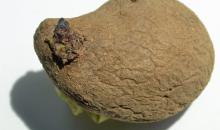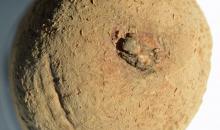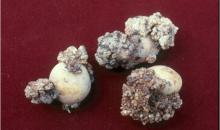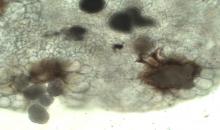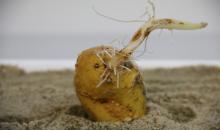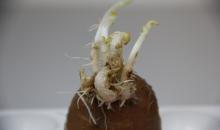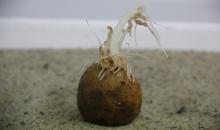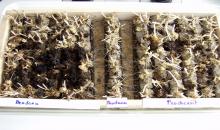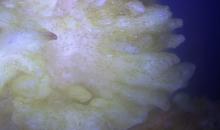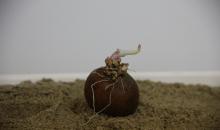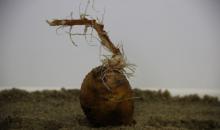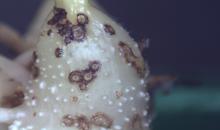Synchytrium endobioticum(SYNCEN)
Photos
For publication in journals, books or magazines, permission should be obtained from the original photographers with a copy to EPPO.
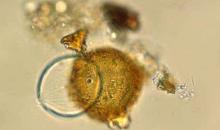
Germinated winter spore with empty sorus attached. Germination pore visible in winter spore
Courtesy: Alexandra Schlenzig, SASA, Edinburgh, UK
Germinating winter spore with sorus containing sporangium
Courtesy: Alexandra Schlenzig, SASA, Edinburgh, UK
Potato cultivar 'Morene' with extensive fresh wart tissue
Courtesy: Science and Advice for Scottish Agriculture (SASA), Edinburgh, UK
Warts formed on the tubers in the soil may surface during the growing season.
Courtesy: CSL, York (GB) - British Crown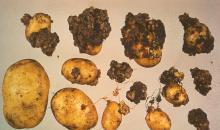
Newly harvested, warted potato tubers of cv. Duke of York; note that some warts are already starting to rot.
Courtesy: Central Science Laboratory, York (GB) - British Crown.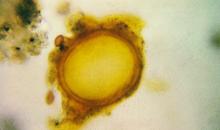
Dead resting (winter) sporangium of S. endobioticum.
Courtesy: Central Science Laboratory, York (GB) - British Crown.
A heavily infected plant showing yellowish warts on subsoil tubers and greenish warts at soil level.
Courtesy: HLB B.V., Wijster (NL).
Live resting (winter) sporangium of S. endobioticum.
Courtesy: Central Science Laboratory, York (GB) - British Crown.
Warts may be formed on emerging sprouts which will not develop into shoots but obtain an irregular, warty cauliflower-like appearance.
Courtesy: HLB B.V., Wijster (NL)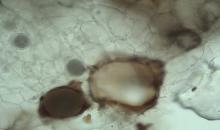
Ripe winter spore (left), empty sorus (right) & immature winter sporangia above
Courtesy: J. Przetakiewicz, IHAR-PIB, PL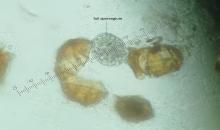
Full sporangium after germination from a resting spore
Courtesy: L. Bender, Julius Kühn-Institut, Institute for National and International Plant Health, DE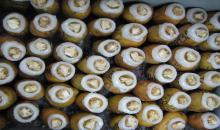
Glynne-Lemmerzahl method: inoculation with pieces of fresh warts placed in the water-filled Vaseline rings
Courtesy: J. Przetakiewicz, IHAR-PIB, PL
Responses formed on sprouts in Spieckermann tests.
Courtesy: Plant Protection Service, Wageningen (NL)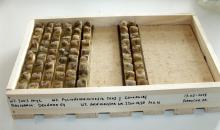
Spieckermann method: tray with cardboard plate inside containing potato eye plugs
Courtesy: G. van Leeuwen, NVWA, NL


